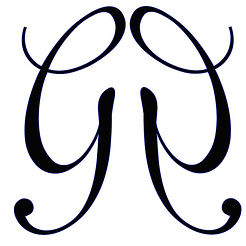The Art of Enhancement: Tracing the Early History of Cosmetic Fillers

In the quest for eternal beauty, the history of cosmetic fillers unveils a fascinating journey of innovation, experimentation, and the evolving standards of aesthetic enhancement. While the contemporary use of fillers to smooth wrinkles and plump lips is a well-established practice, the roots of cosmetic fillers extend deep into history, revealing the desire for rejuvenation has been a timeless pursuit.
Ancient Remedies and Early Attempts: The concept of enhancing facial features dates back centuries. In ancient civilizations, people explored various remedies to combat the effects of aging. Ancient Egyptians, for instance, concocted potions using natural ingredients like beeswax and honey to restore youthful vibrancy to the skin. While these early attempts lacked the sophistication of modern fillers, they underscore the timeless human desire for youthful and radiant skin.
Paraffin and Silicone: Pioneering the Path: The early 20th century witnessed the introduction of more substantial materials for facial augmentation. Paraffin, a waxy substance, gained popularity in the 1920s as an injectable filler. However, its usage was marred by complications, including inflammation and migration, leading to a decline in its popularity. Silicone injections emerged in the mid-20th century as another attempt at facial augmentation, but safety concerns and complications relegated it to the fringes of cosmetic practices.
Collagen Era: A Milestone in Filler Evolution: The 1980s marked a pivotal moment in the history of cosmetic fillers with the advent of collagen injections. Bovine collagen, derived from cowhide, became a widely used filler, providing a temporary solution for reducing facial wrinkles. While collagen injections offered a more reliable option than their predecessors, their short-lived effects and the risk of allergic reactions prompted continued exploration for safer and more enduring alternatives.
Hyaluronic Acid: The Modern Renaissance: The late 20th century witnessed a paradigm shift with the introduction of hyaluronic acid-based fillers. Hyaluronic acid, a substance naturally occurring in the human body, proved to be a game-changer. Brands like Restylane and Juvederm utilized this gel-like substance, offering a safer and more predictable solution for facial enhancement. The versatility of hyaluronic acid allowed for subtle corrections and plumping effects, making it a staple in contemporary aesthetic practices.
The Future of Cosmetic Fillers: As we reflect on the early history of cosmetic fillers, it's clear that the journey from ancient remedies to modern injectables has been marked by a relentless pursuit of beauty and rejuvenation. Today, the landscape continues to evolve with ongoing research into novel materials, innovative delivery methods, and a heightened focus on natural-looking results. The quest for the perfect filler persists, promising a future where science and art converge to redefine the boundaries of cosmetic enhancement.
In conclusion, the early history of cosmetic fillers showcases the enduring human fascination with youthful beauty and the ever-evolving techniques employed to achieve it. From ancient elixirs to the sophisticated fillers of today, each chapter in this history unfolds a tale of resilience, innovation, and the timeless pursuit of aesthetic perfection.






